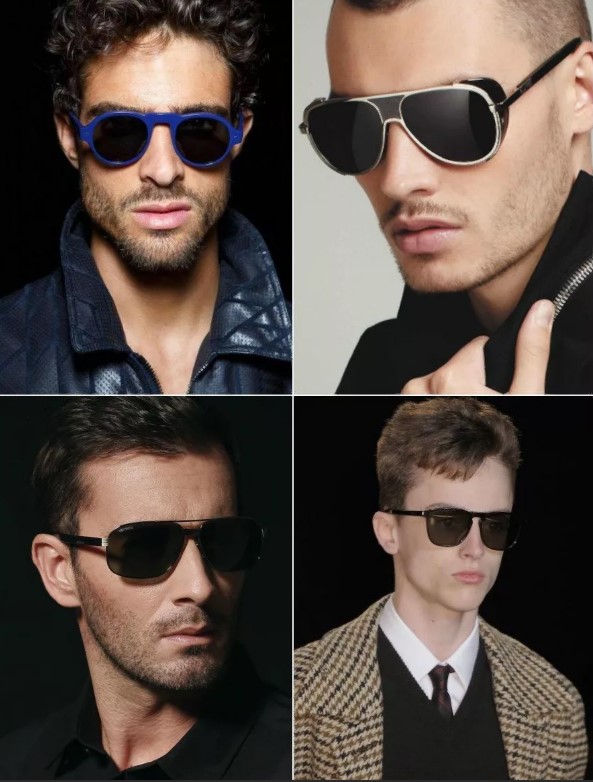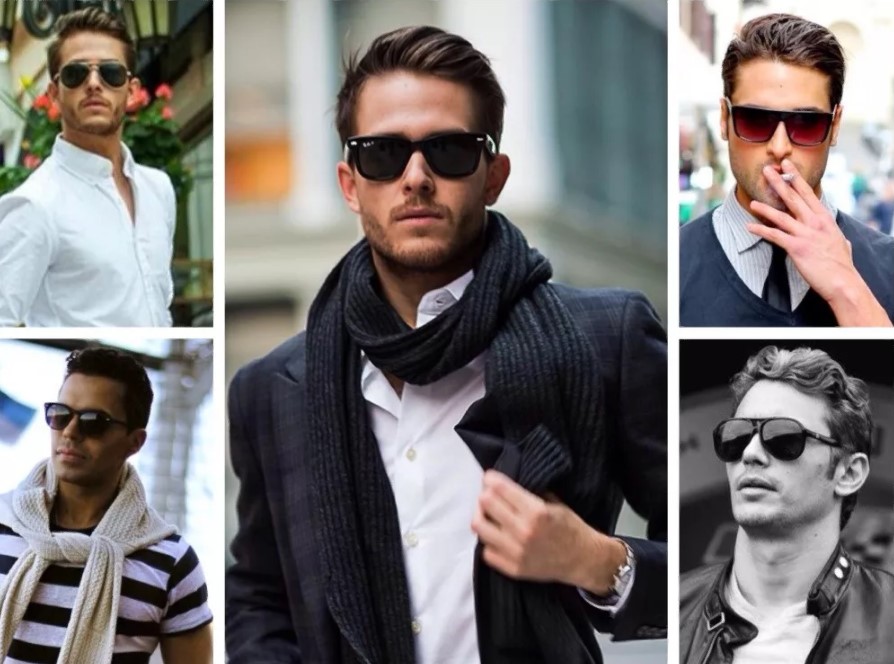 When choosing sunglasses, both men and women strive to acquire reliable eye protection. But an equally important point is whether they fit correctly, and whether you will have to buy new ones in a couple of weeks. Therefore, purchasing optics is a very responsible process, because low-quality glasses can seriously impair vision. And if you are also going on vacation to a sunny country, then you should not save money by buying a fake.
When choosing sunglasses, both men and women strive to acquire reliable eye protection. But an equally important point is whether they fit correctly, and whether you will have to buy new ones in a couple of weeks. Therefore, purchasing optics is a very responsible process, because low-quality glasses can seriously impair vision. And if you are also going on vacation to a sunny country, then you should not save money by buying a fake.
Tips for choosing quality sunglasses
It is not necessary to overpay for glass lenses, modern plastic is in no way inferior them in terms of protection, and sometimes even superior. In addition, it is lighter and more practical.

Before the purchase read the product data sheet, where its most important characteristics are indicated, such as the degree of protection from ultraviolet radiation and light transmittance.
You should choose glasses in a specialty store, guided by the principle “health is more important”.Remember that questionable savings can lead to vision damage, retinal burns and even cataracts.
Choosing a color, keep in mind that neutral shades are more comfortable for the eyes. Experts advise for myopia wear brown lenses and for farsightedness – gray or green.
Large-sized glass will provide better protection for both the eyes themselves and the skin around them. And if the glasses also have wide temples, then you are not afraid of lateral solar radiation. This is relevant for drivers, as well as when vacationing in the south.

Frame and lens material: glass or plastic
Lenses can be of two types: glass and plastic.
Among the advantages plastic from acrylic or polycarbonate can be called:
- ease;
- resistance to falls from heights;
- complete protection from ultraviolet radiation;
- Convenience for sports.
 Whereas glass has:
Whereas glass has:
- fragility;
- it is quite heavy;
- may cause injury;
- becomes covered with a layer of moisture during temperature changes.
Important! Car enthusiasts are better off choosing plastic lenses, with which the risk of injury during an accident will be minimal.
The material for the frame is not important. Plastic is lightweight, strong and durable.

From metal it is better to choose steel, having previously examined whether there are any cracks on the glass at the points of attachment to the frame due to the constriction.
The quality of the frame is easy to check:
- bend the model a little in your hands (a good one will not deform or break);
- open and fold the arms several times;
- Make sure the screw connections are tight.
Color and shade level
Lens darkening intensity is not an indication of the level of sun protection. A high-quality transparent lens can almost completely protect your eyes from ultraviolet radiation, having a special coating.

It is believed that without a special filter, high darkness will only harm the eyes. After all, in the dark, a reflex dilation of the pupil occurs, and harmful radiation simply rushes into the eye.
Advice! You can check whether the lens tint matches your vision by looking at the sun. If your eyes are comfortable, you won't squint.
Known:
- lenses in gray or green tones do not distort colors and are suitable for any weather;
- golden yellow - hides blue, comfortable on cloudy days;
- polarized type - do not transmit bright radiation even from direct sunlight;

- mirror - effectively reflect light rays in the highlands;

- photochromic (“chameleons”) - change color depending on the lighting and are good in any weather;
- graduated version - darkening only half, can be worn everywhere, including for drivers.

Important! The coloring of the glass must be uniform. If the top of the glass is darker, the protection from harmful rays will not be effective enough.
Radiation protection
This factor is indicated by the manufacturer in the product passport. According to the unified system, There are five degrees of protection:
- Minimum – designated as “0” (80% or more of light rays pass through the filter).
- Medium – it is characterized by coefficients 1 (43–80% of light) and 2 (18–43% of light).
- The third level has protective filters with a throughput of up to 18% (recommended for holidays by the sea, in nature, during city walks on clear days).
- Level four – transmits only up to 8% of radiation (an excellent choice for a trip to Thailand).
Polarizing coating
Consultants at optical salons usually recommend sunglasses such as both male and female drivers, and sunbathers on the beach. In this case, it is important that the polarizing filter in the form of a special lens coating is of high quality and fully blocks all kinds of glare reflections.

Checking polarized glasses when purchasing
This can be done in three ways:
- Hologram (every seller has this three-dimensional image and is practically indistinguishable without glasses).
- Using a smartphone (as in the picture below).

- According to the “two in one” principle. One glasses are put on, and the second of the same model is brought 10–15 cm closer to them and slowly turned 90 degrees. The glasses should become completely dark; if they remain partially transparent, then the polarizing filter on one of them is of poor quality.
Photochromic coating
This layer distinguishes “chameleons” from other sun lenses. Their big advantage is that the transmission of the light beam depends on the degree of illumination at the moment. This feature is used by motorists when driving at night.

The fact is that the light falling on the photochromic coating makes the glass dark, whereas in the dark they are absolutely transparent.
Choosing sunglasses to suit your face
Both women and men certainly want to have glasses in their arsenal that will suit them. In this regard, recommendations for the strong and beautiful half of humanity are quite similar:
- For those with wide faces, it is better to avoid frames that protrude beyond the side lines of the face.
- For narrow-faced people, a frame protruding in the temporal region will visually widen the cheekbones slightly.
- Rhinestone trim is not for those with thin lips.
- Those with large lips and nose should not wear rimless glasses.

How to distinguish quality glasses from counterfeit ones?
It's pretty simple. Branded product is different a number of characteristic features:
- The product data sheet indicates the degree of protection against ultraviolet radiation and the darkness coefficient.
- The brand designation must certainly be on the glass and on the inner surface of the bow.
- Lenses do not distort surrounding objects.
- The tint of the glass is uniform.
- The frame screws are tightened tightly.
- A case is included with the glasses.

Thus, high-quality sunglasses, as a rule, can only be bought in a company store and they are unlikely to be very cheap. But it’s worth taking a closer look at those products that are sold in pharmacies and kiosks. The main thing is to know the basic principles of choosing a suitable model.


 0
0






Thank you for the article!
Very clear and accessible)
Thank you!)